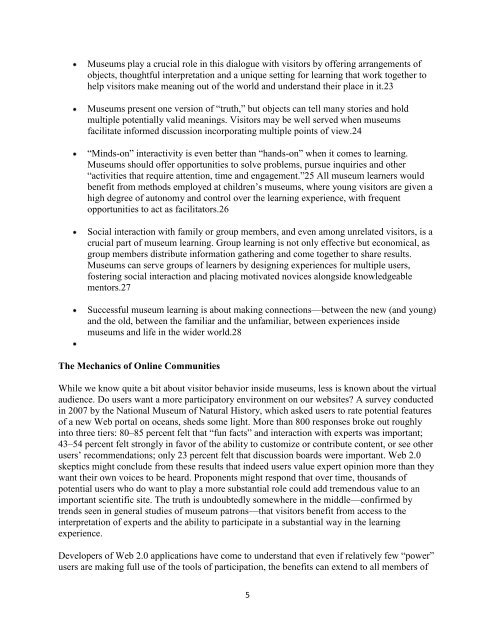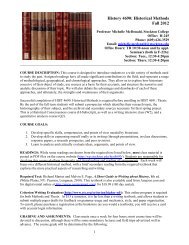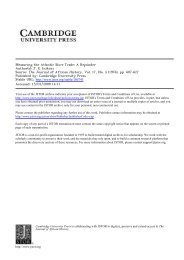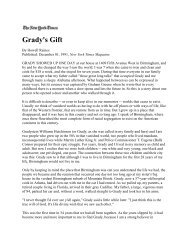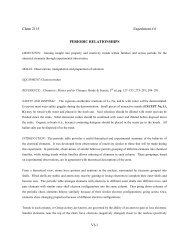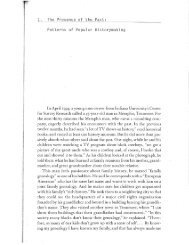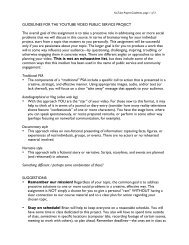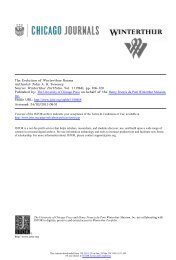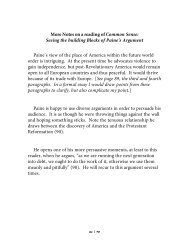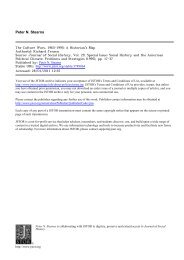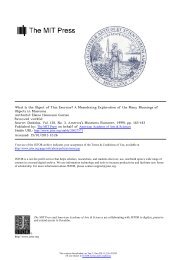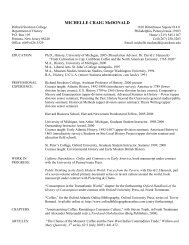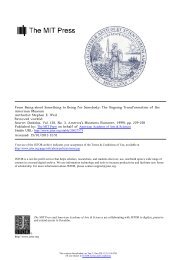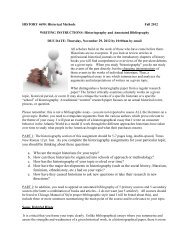can museum allow online users to become participants?
can museum allow online users to become participants?
can museum allow online users to become participants?
Create successful ePaper yourself
Turn your PDF publications into a flip-book with our unique Google optimized e-Paper software.
Museums play a crucial role in this dialogue with visi<strong>to</strong>rs by offering arrangements of<br />
objects, thoughtful interpretation and a unique setting for learning that work <strong>to</strong>gether <strong>to</strong><br />
help visi<strong>to</strong>rs make meaning out of the world and understand their place in it.23<br />
Museums present one version of ―truth,‖ but objects <strong>can</strong> tell many s<strong>to</strong>ries and hold<br />
multiple potentially valid meanings. Visi<strong>to</strong>rs may be well served when <strong>museum</strong>s<br />
facilitate informed discussion incorporating multiple points of view.24<br />
―Minds-on‖ interactivity is even better than ―hands-on‖ when it comes <strong>to</strong> learning.<br />
Museums should offer opportunities <strong>to</strong> solve problems, pursue inquiries and other<br />
―activities that require attention, time and engagement.‖25 All <strong>museum</strong> learners would<br />
benefit from methods employed at children‘s <strong>museum</strong>s, where young visi<strong>to</strong>rs are given a<br />
high degree of au<strong>to</strong>nomy and control over the learning experience, with frequent<br />
opportunities <strong>to</strong> act as facilita<strong>to</strong>rs.26<br />
Social interaction with family or group members, and even among unrelated visi<strong>to</strong>rs, is a<br />
crucial part of <strong>museum</strong> learning. Group learning is not only effective but economical, as<br />
group members distribute information gathering and come <strong>to</strong>gether <strong>to</strong> share results.<br />
Museums <strong>can</strong> serve groups of learners by designing experiences for multiple <strong>users</strong>,<br />
fostering social interaction and placing motivated novices alongside knowledgeable<br />
men<strong>to</strong>rs.27<br />
Successful <strong>museum</strong> learning is about making connections—between the new (and young)<br />
and the old, between the familiar and the unfamiliar, between experiences inside<br />
<strong>museum</strong>s and life in the wider world.28<br />
The Mechanics of Online Communities<br />
While we know quite a bit about visi<strong>to</strong>r behavior inside <strong>museum</strong>s, less is known about the virtual<br />
audience. Do <strong>users</strong> want a more participa<strong>to</strong>ry environment on our websites? A survey conducted<br />
in 2007 by the National Museum of Natural His<strong>to</strong>ry, which asked <strong>users</strong> <strong>to</strong> rate potential features<br />
of a new Web portal on oceans, sheds some light. More than 800 responses broke out roughly<br />
in<strong>to</strong> three tiers: 80–85 percent felt that ―fun facts‖ and interaction with experts was important;<br />
43–54 percent felt strongly in favor of the ability <strong>to</strong> cus<strong>to</strong>mize or contribute content, or see other<br />
<strong>users</strong>‘ recommendations; only 23 percent felt that discussion boards were important. Web 2.0<br />
skeptics might conclude from these results that indeed <strong>users</strong> value expert opinion more than they<br />
want their own voices <strong>to</strong> be heard. Proponents might respond that over time, thousands of<br />
potential <strong>users</strong> who do want <strong>to</strong> play a more substantial role could add tremendous value <strong>to</strong> an<br />
important scientific site. The truth is undoubtedly somewhere in the middle—confirmed by<br />
trends seen in general studies of <strong>museum</strong> patrons—that visi<strong>to</strong>rs benefit from access <strong>to</strong> the<br />
interpretation of experts and the ability <strong>to</strong> participate in a substantial way in the learning<br />
experience.<br />
Developers of Web 2.0 applications have come <strong>to</strong> understand that even if relatively few ―power‖<br />
<strong>users</strong> are making full use of the <strong>to</strong>ols of participation, the benefits <strong>can</strong> extend <strong>to</strong> all members of<br />
5


